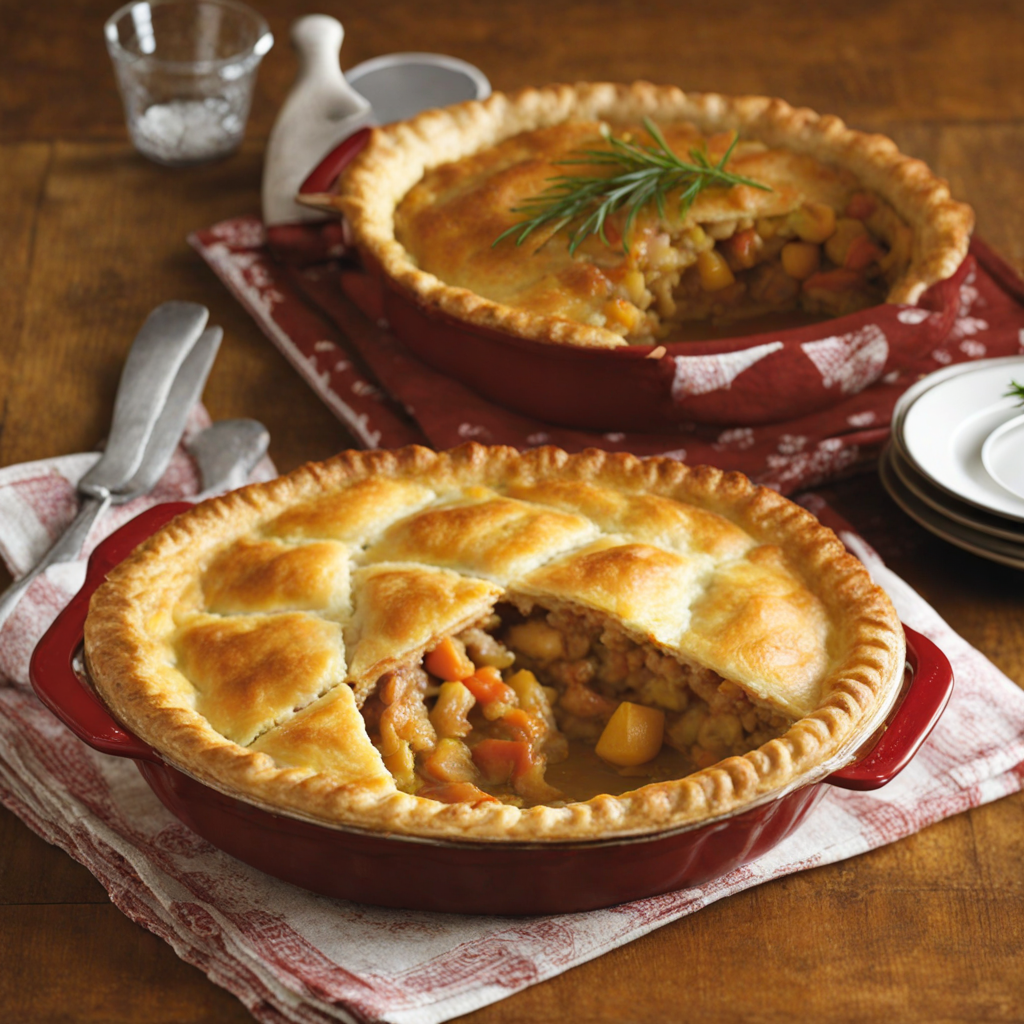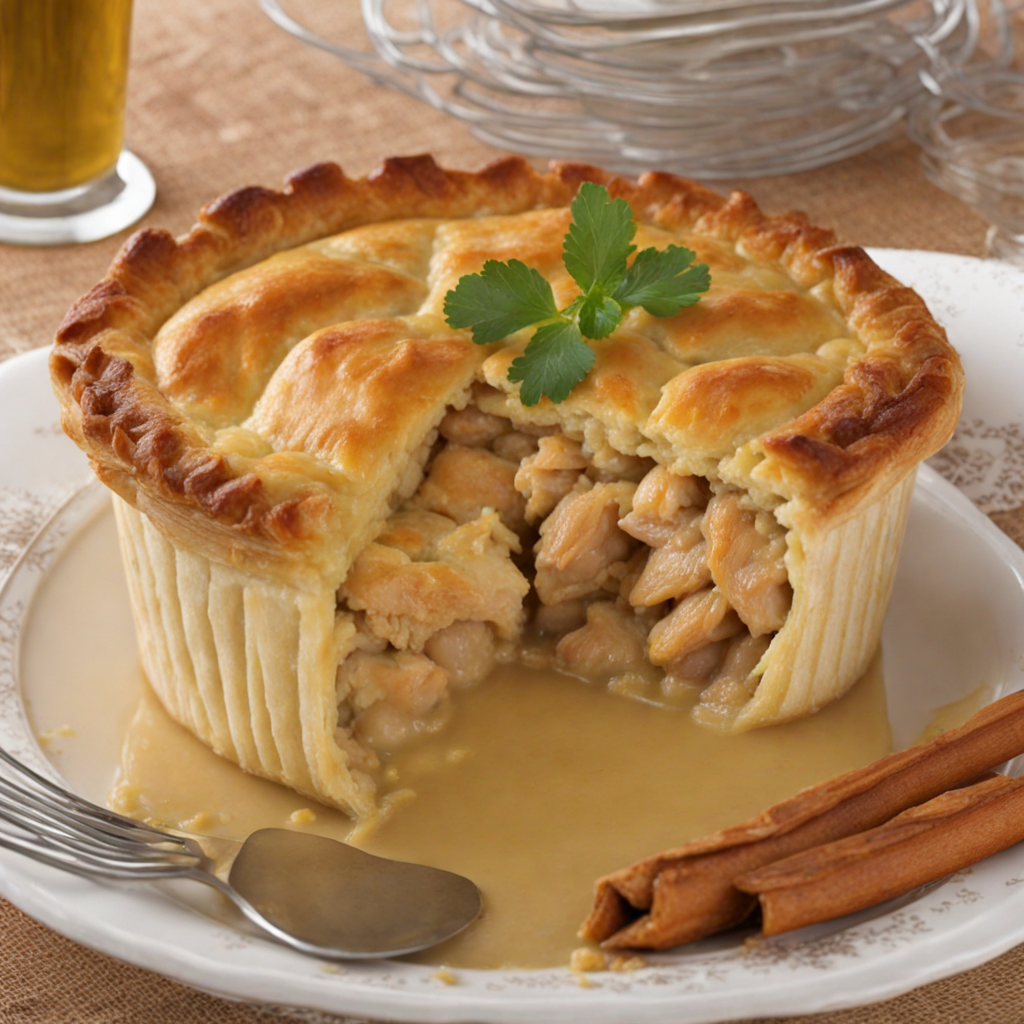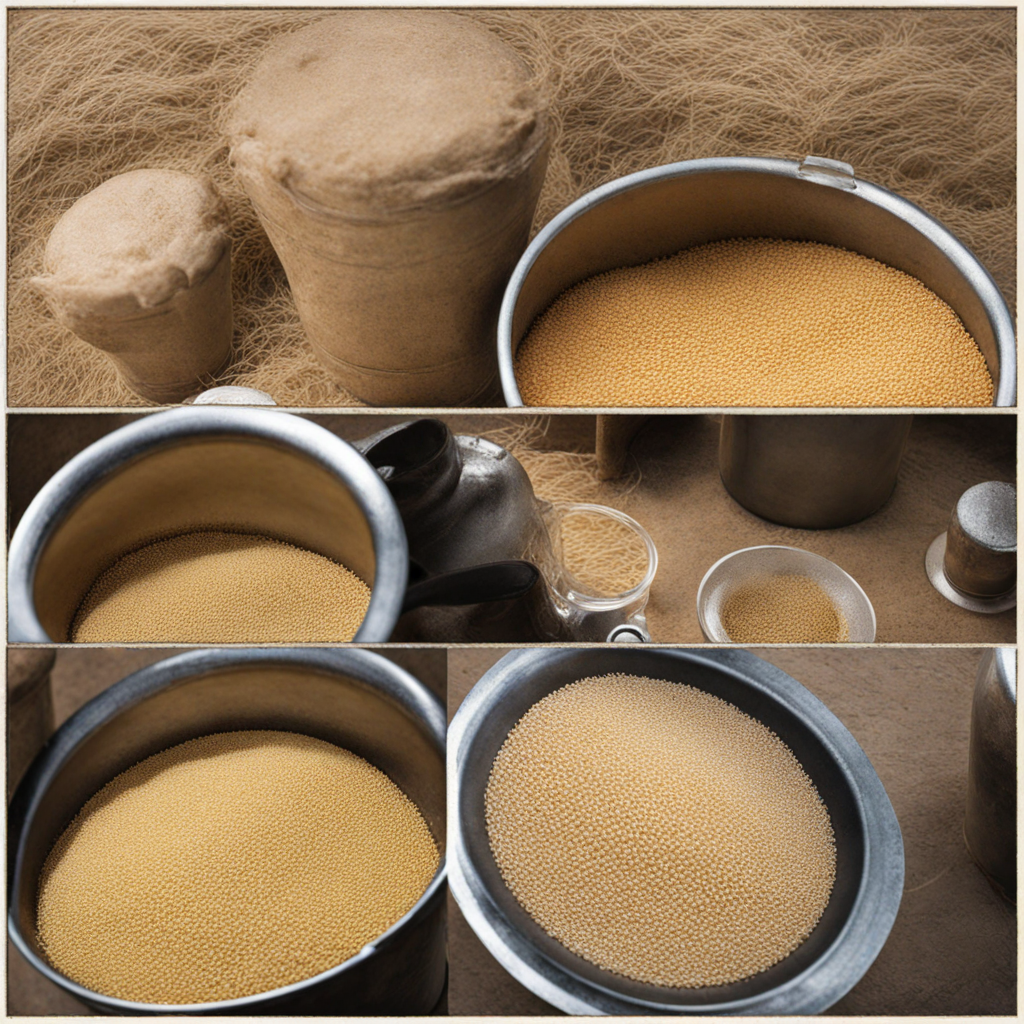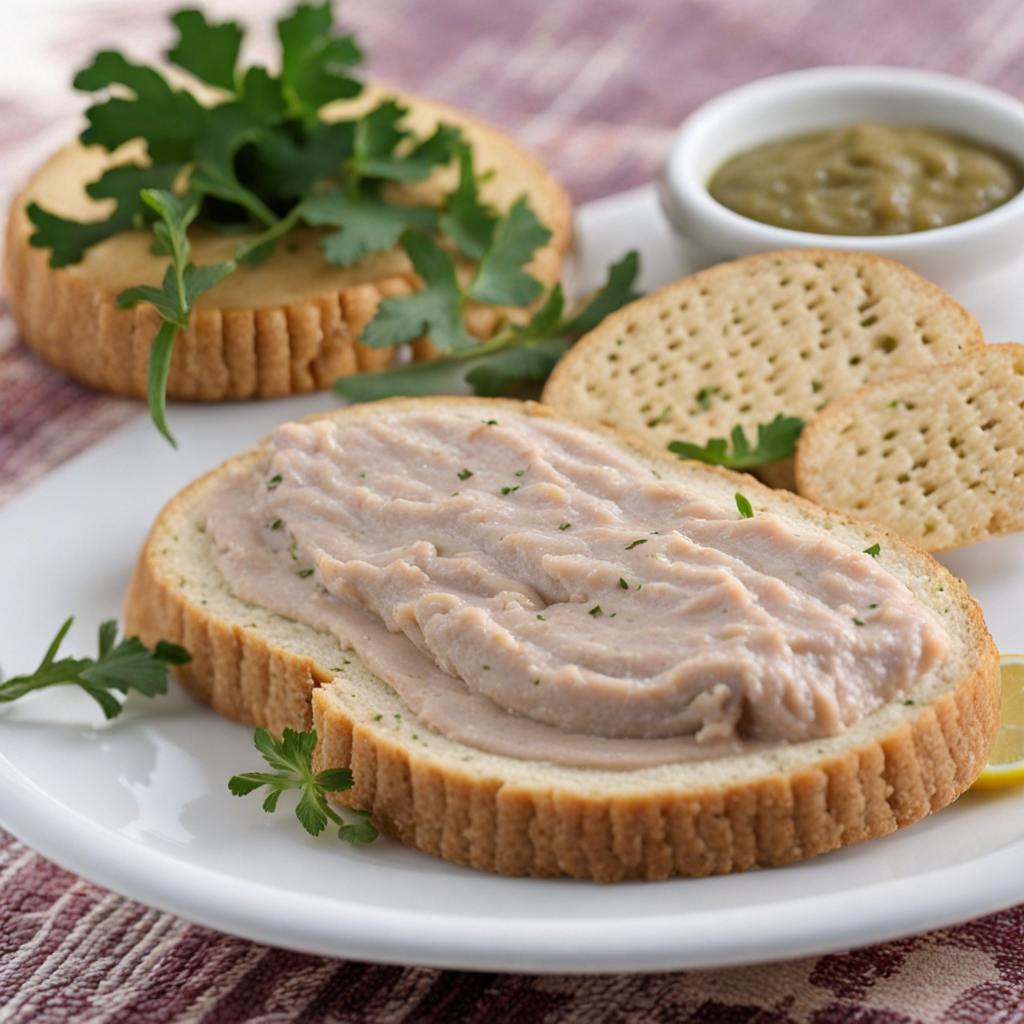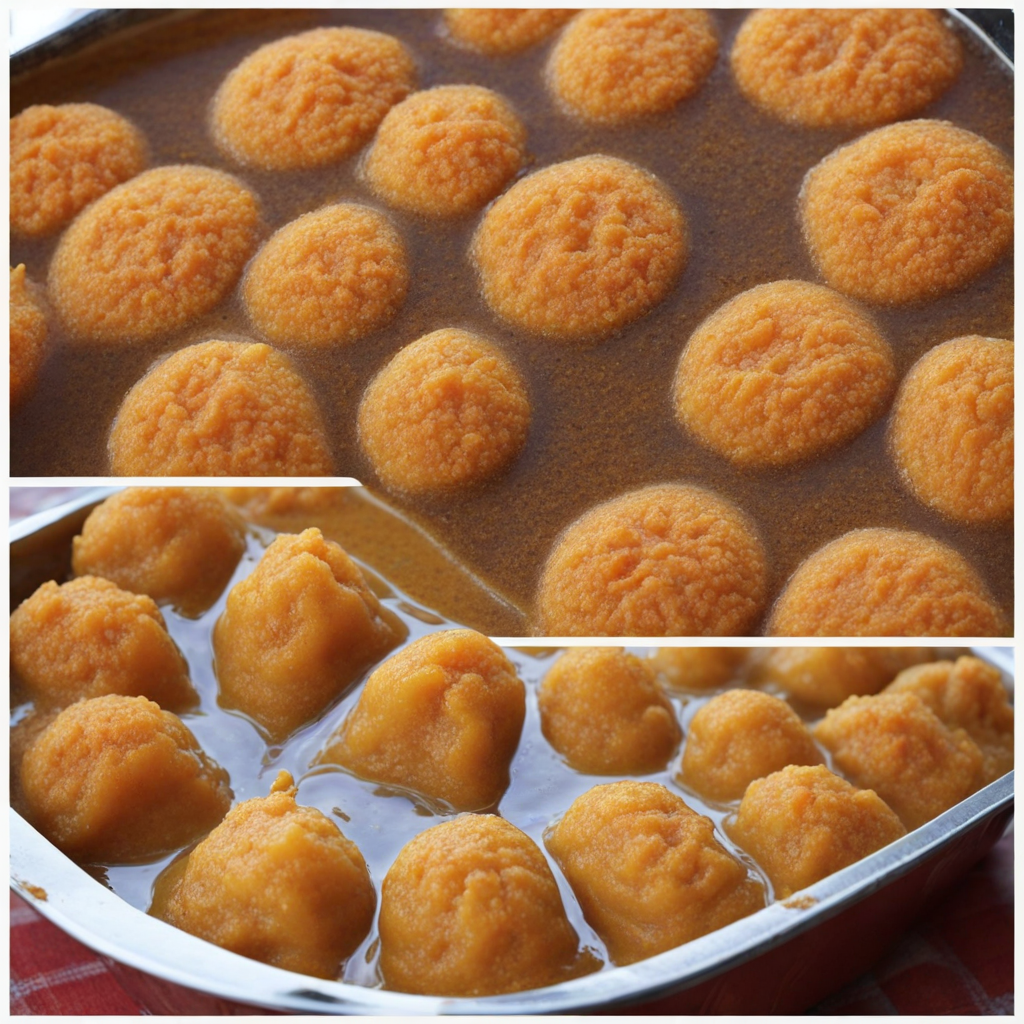Hoenderpastei
Hoenderpastei, a beloved South African dish, is a savory chicken pie that embodies comfort food at its finest. This delightfully flaky pastry envelops a rich and hearty filling, typically made from tender chicken pieces, slow-cooked with aromatic herbs and spices. The filling often includes a medley of vegetables such as peas, carrots, and sometimes mushrooms, all simmered together to create a delectable, creamy sauce that seeps into the pastry, enriching every bite with flavor and texture. What sets Hoenderpastei apart is its unique blend of spices that reflect the diverse culinary influences of South Africa. The use of spices like curry powder, paprika, and bay leaves adds warmth and depth to the dish, inviting you to experience a fusion of flavors that dance on your palate. The golden-brown crust is the perfect contrast to the luscious filling, providing a satisfying crunch that complements the tender chicken and vegetables inside. Served hot, Hoenderpastei is often enjoyed as a family meal, bringing together loved ones around the dinner table. It's not uncommon to find it accompanied by a side of chutney or a fresh salad, enhancing the experience with a touch of sweetness or brightness. Whether you savor it as a comforting weeknight dinner or as part of a festive gathering, Hoenderpastei promises a hearty, flavorful adventure that captures the essence of South African cuisine.
How It Became This Dish
Hoenderpastei: A Culinary Journey Through South Africa's Food Heritage South Africa’s diverse culinary landscape is a vibrant tapestry woven from indigenous traditions, colonial influences, and immigrant flavors, representing a rich history that has evolved over centuries. Among the many dishes that showcase this cultural amalgamation, Hoenderpastei stands out as a beloved comfort food with deep roots in South African cuisine. This chicken pie, traditionally filled with a savory mixture of chicken, vegetables, and spices, serves not only as a delicious meal but also as a symbol of community, family, and heritage. The Origins of Hoenderpastei The origins of Hoenderpastei can be traced back to the broader European tradition of savory pies, which were common in various forms across the continent. Pies filled with meat and vegetables have been made since ancient times, with historical records indicating that the Greeks and Romans enjoyed similar dishes. However, it was the British who significantly influenced South African culinary practices, particularly during the 18th and 19th centuries when British settlers began to arrive in the region. As the British established their presence in South Africa, they brought with them their love for pies, which were often seen as practical meals that could be easily transported and served. The traditional meat pie evolved within the local context, adapting to the ingredients available and the tastes of the South African people. The introduction of local ingredients such as chicken, potatoes, carrots, and spices led to the development of Hoenderpastei, a dish that reflects the fusion of British culinary techniques with indigenous flavors. Cultural Significance Hoenderpastei is more than just a dish; it is a culinary representation of South African culture and community. In a country where food often plays a central role in social gatherings, Hoenderpastei is frequently included in family celebrations, festive occasions, and communal meals. Its preparation is often a communal activity, with family members coming together to create the pie, each contributing their own touch to the recipe and process. This aspect of communal cooking fosters connections and strengthens family bonds, making Hoenderpastei a cherished part of South African heritage. Furthermore, the dish has become emblematic of comfort food in South African households. It evokes memories of home, warmth, and togetherness, often served during winter months or on special occasions. The pie’s ability to be made in large quantities makes it an ideal dish for gatherings, where its hearty filling and flaky crust can satisfy a crowd. As such, Hoenderpastei has found a place in the hearts and homes of many South Africans, transcending cultural and racial divides. Ingredients and Preparation The traditional recipe for Hoenderpastei is relatively simple, yet it allows for a great deal of creativity. The filling generally consists of chicken, which is often cooked with onions, garlic, and a selection of vegetables. Carrots, peas, and potatoes are common additions, providing both flavor and texture. The dish is seasoned with salt, pepper, and sometimes a hint of curry powder, reflecting the influence of the Indian culinary tradition that has also permeated South African cuisine. The crust is equally significant, typically made from a buttery pastry that is rolled out and shaped to encase the filling. While some families may choose to use a store-bought pastry for convenience, many still opt for homemade dough, which adds an extra layer of love and authenticity to the dish. The pie is then baked until golden brown, creating a delightful contrast between the flaky exterior and the savory, aromatic filling. Evolution Over Time As South Africa has changed, so too has Hoenderpastei. The dish has adapted to reflect contemporary tastes and dietary preferences, with variations emerging that cater to an increasingly diverse population. Today, one can find vegetarian and vegan adaptations of Hoenderpastei, using alternatives such as mushrooms, lentils, or plant-based proteins in place of chicken. These modern interpretations maintain the spirit of the original dish while making it more inclusive for those who follow different dietary practices. In addition, the globalization of food culture has introduced new influences into the traditional recipe. Ingredients like peri-peri sauce, a spicy chili sauce with Mozambican roots, have found their way into Hoenderpastei, adding a bold twist to the classic flavor profile. Similarly, the incorporation of international spices and herbs reflects the evolving nature of South African cuisine as it continues to embrace global influences. Moreover, with the advent of social media and food blogging, Hoenderpastei has gained recognition beyond the borders of South Africa. Food enthusiasts from around the world are discovering this comforting dish, leading to a resurgence of interest in South African cuisine as a whole. This newfound appreciation is helping to preserve traditional recipes while also inspiring chefs and home cooks to innovate and experiment. Hoenderpastei Today Today, Hoenderpastei is a staple in many South African homes and is often featured on restaurant menus as a comforting option. It is commonly served with a side of salad or vegetables, making it a well-rounded meal. The dish also finds its way into catering for events, showcasing its versatility and appeal. From rustic family dinners to upscale dining experiences, Hoenderpastei continues to be a beloved choice. In recent years, food festivals and culinary competitions have further elevated the status of Hoenderpastei, with local chefs putting their unique spins on the dish and celebrating its rich history. This has sparked a renewed interest in not only Hoenderpastei but also in other traditional South African dishes, creating an environment where culinary heritage is honored and shared. Conclusion Hoenderpastei is more than just a chicken pie; it embodies the heart and soul of South African culture. Its journey from a simple British-inspired dish to a cherished comfort food reflects the nation’s complex history and the blending of diverse culinary traditions. As it continues to evolve and adapt, Hoenderpastei remains a delicious reminder of the connections that food can forge, serving as a testament to the enduring spirit of South African hospitality and community. Whether enjoyed at a family gathering, a festive occasion, or a local eatery, Hoenderpastei stands as a symbol of comfort, tradition, and the ever-evolving story of South African cuisine.
You may like
Discover local flavors from South Africa


